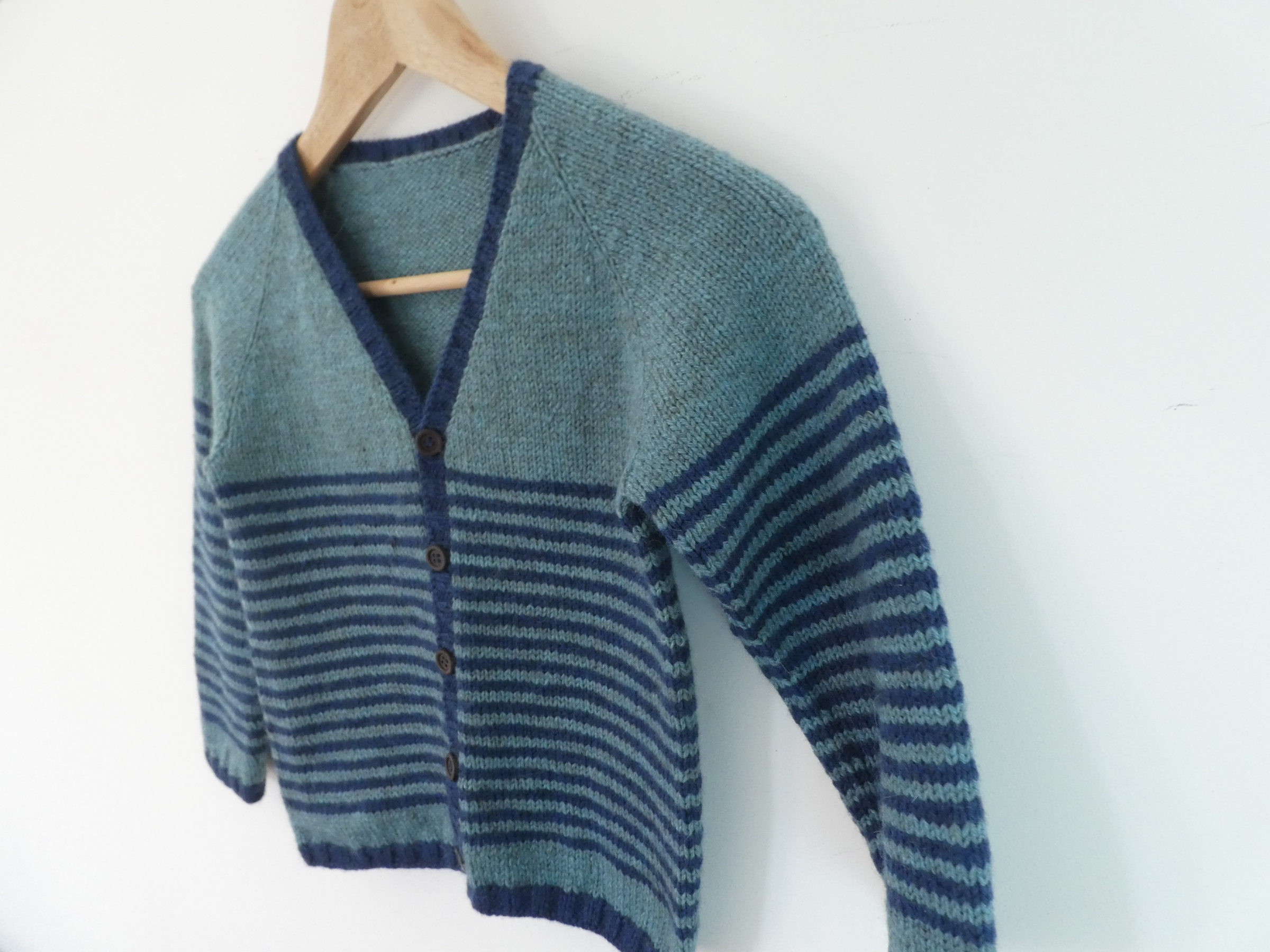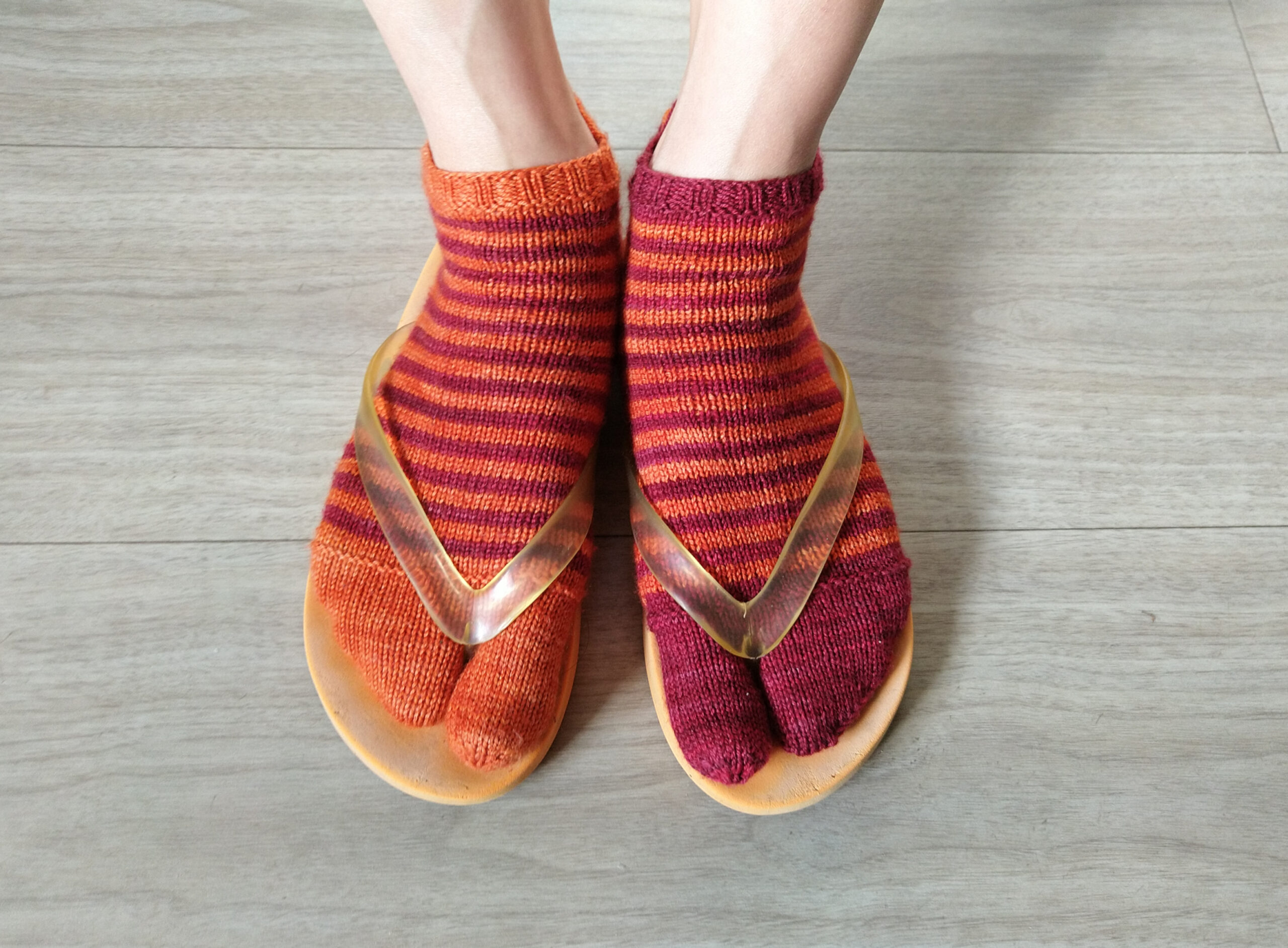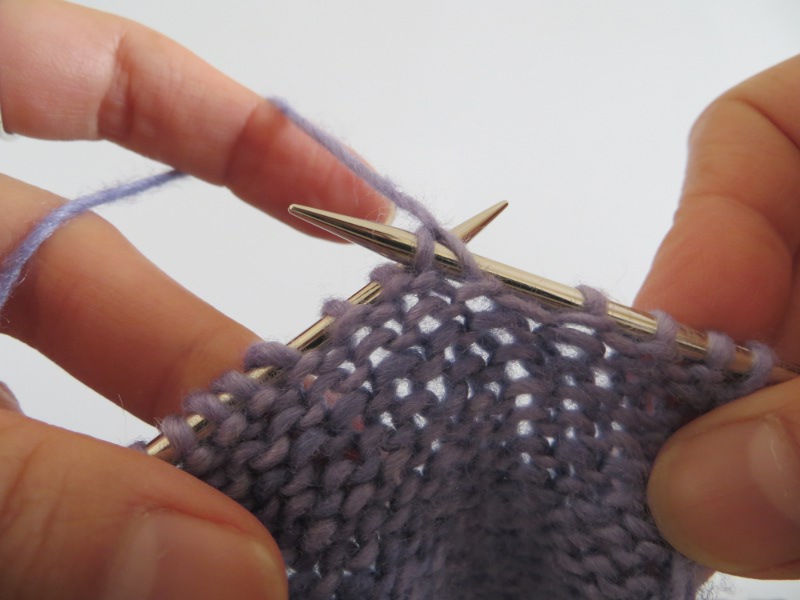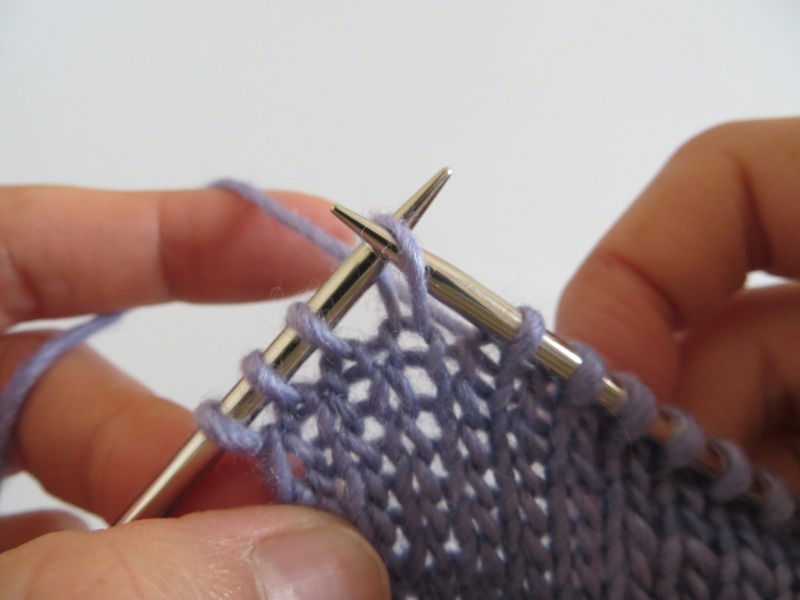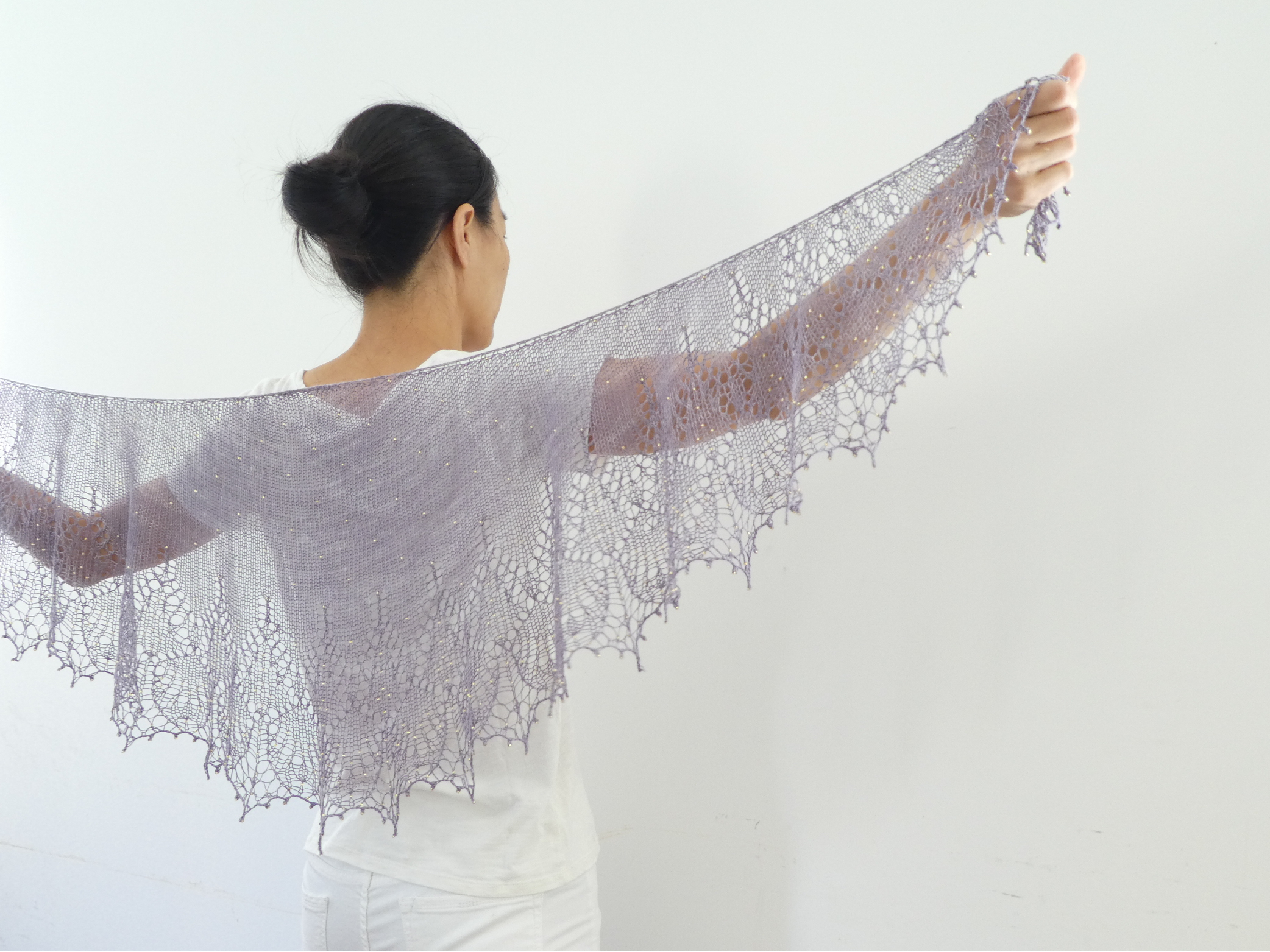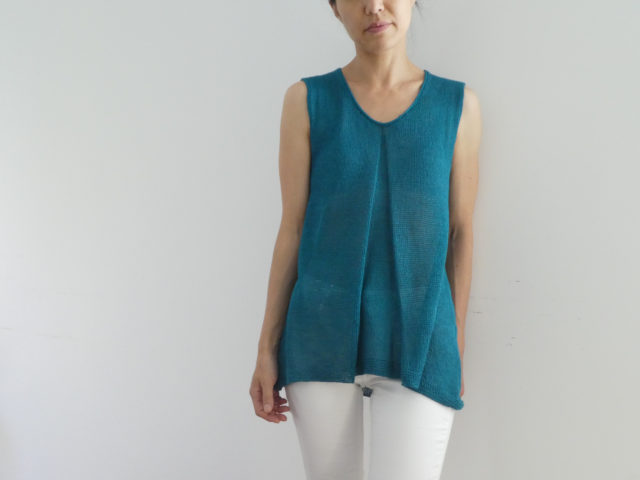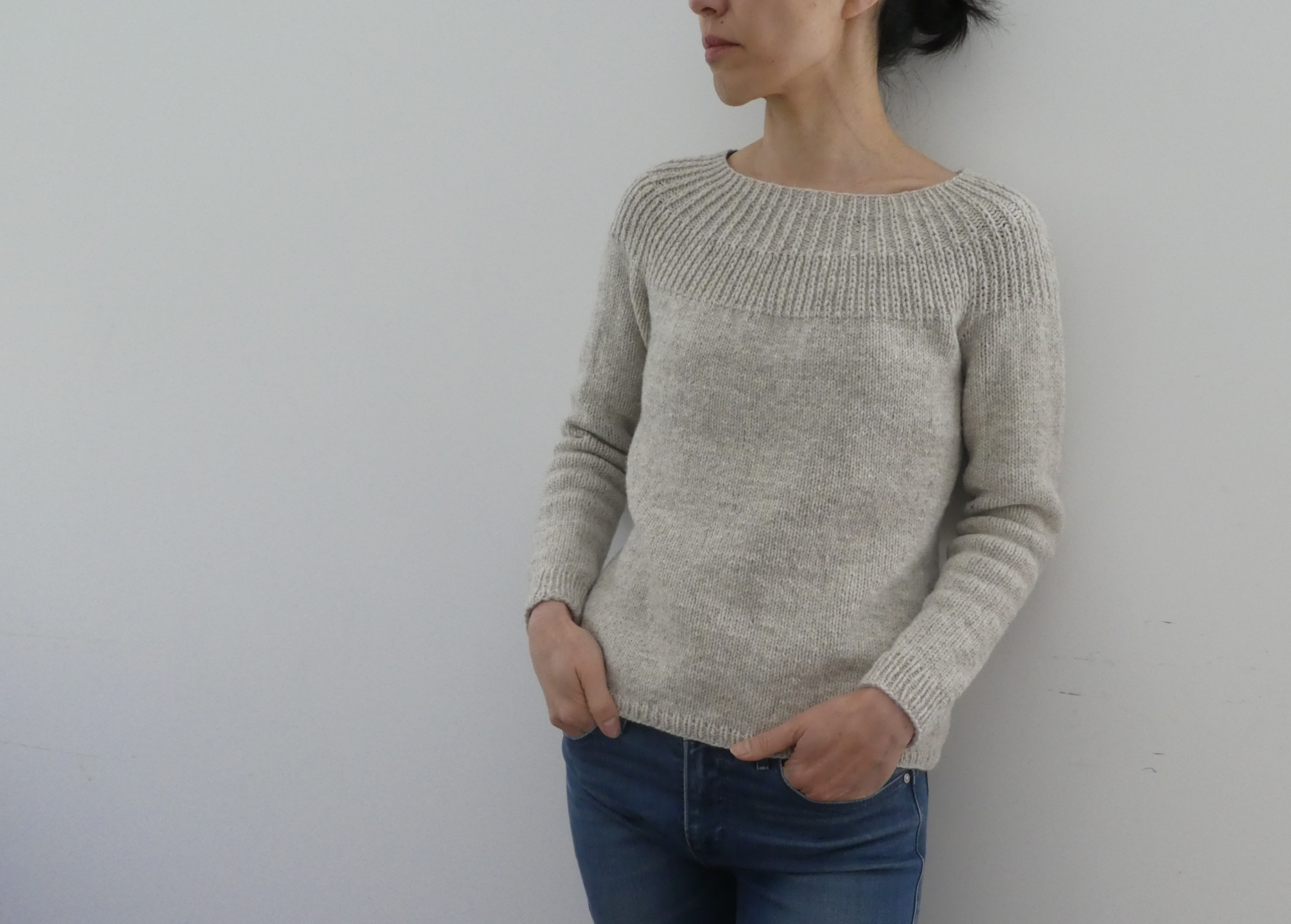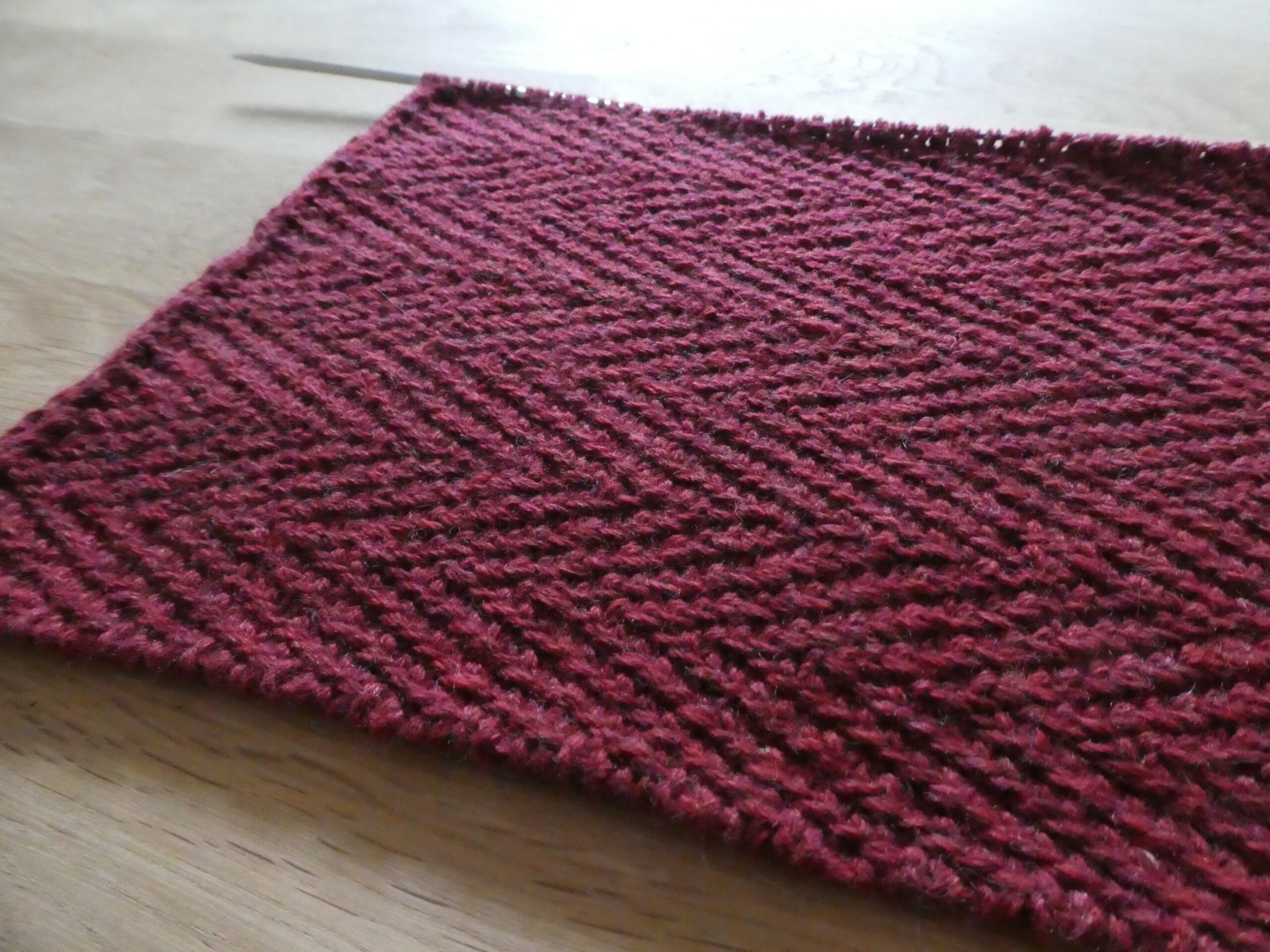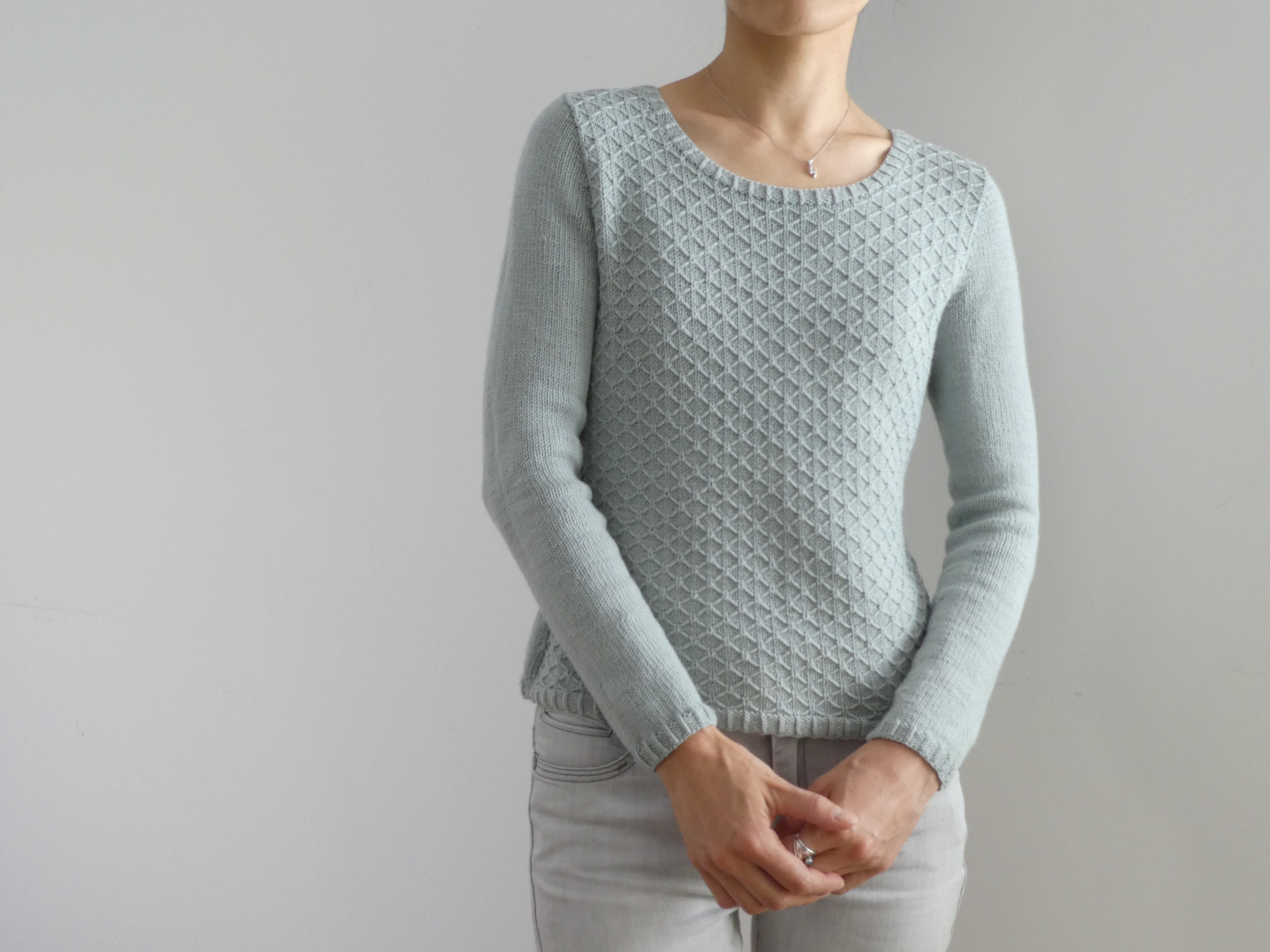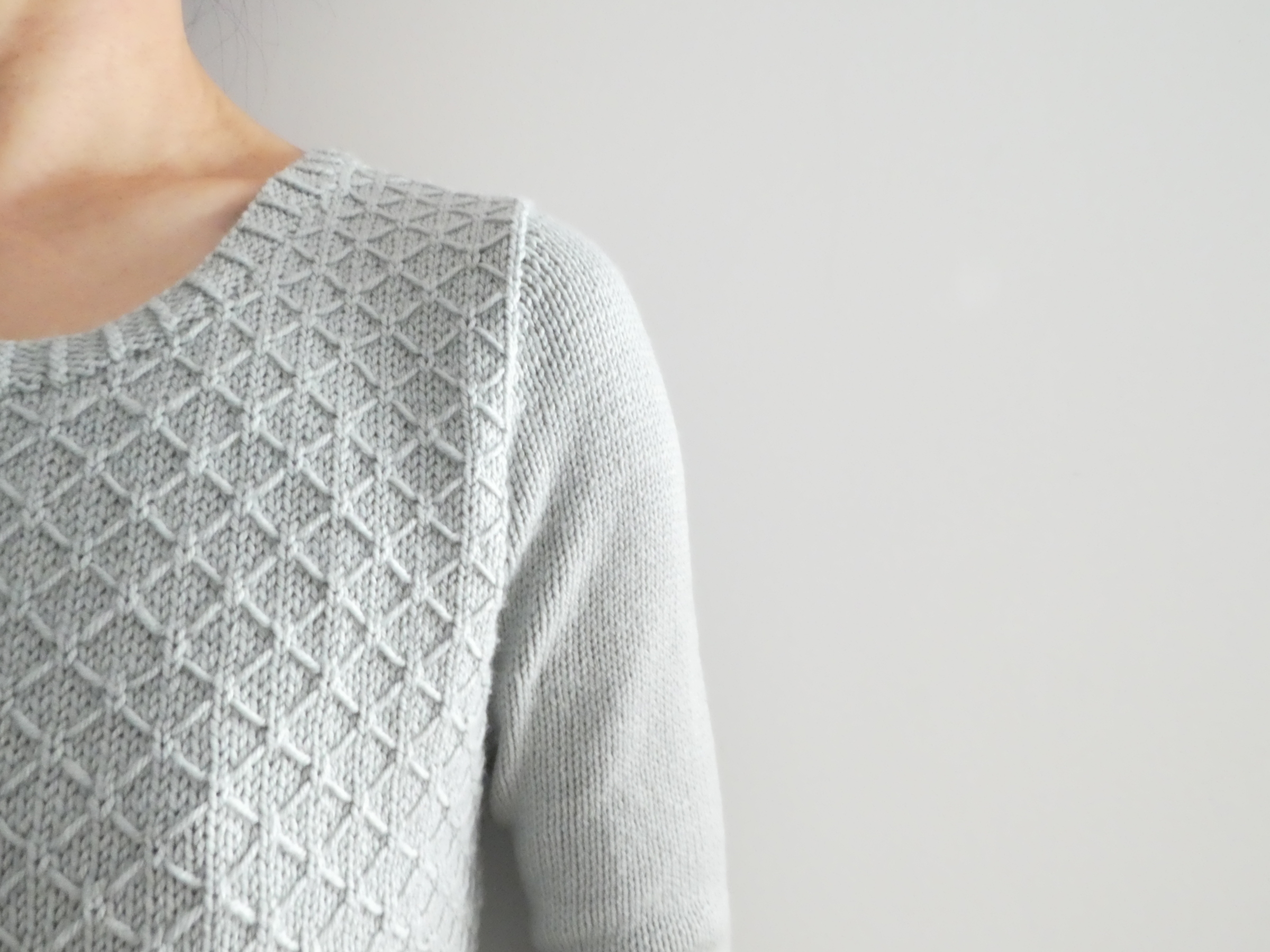As some of you may know, I made a Seacoast pullover not so long ago. I really love this design by Joji, and when I saw a new Poivre Blanc color on De Rerum Natura website, I wanted to make a winter version of this.
And unfortunately, I fulled my first Seacoast sweater: I hand-washed it, but wanted to spin-dry it. My washing machine didn’t find the balance with a wet-heavy sweater to go to spin-dry, and my sweater continued to go up and tumble in the machine… The fabric lost the elasticity and the characteristic rib-stitches on the yoke were flattened. And this unfortunate event precipitated my decision to make a winter version.
I naturally used Gilliatt in Poivre Blanc. For those who don’t know yet, Gilliatt is a yarn from a French brand, De Rerum Natura. They use mainly French merino wool, and their yarns are made in France and the countries nearby, Italy and Belgium if I remember correctly. So my second Seacoast is French, unlike the first one which was British (but not totally European).
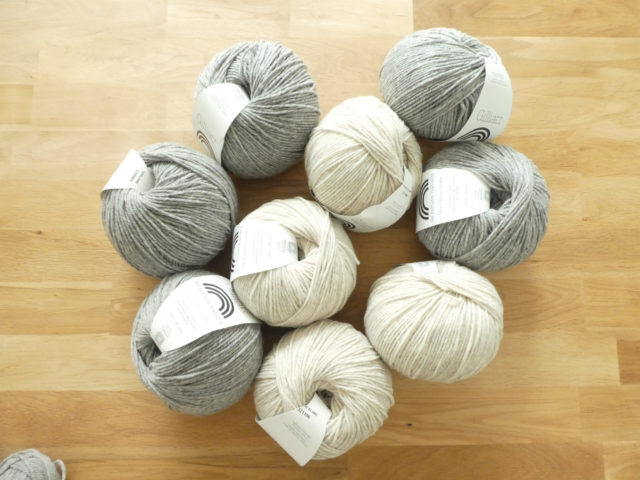
I didn’t obtain the pattern gauge (18 sts). So I followed the instructions of the third size to make an intermediate (between the second and third) size.
Seacoast has a large neck, a bit too large to my taste (I’ll be cold in winter!), so I already customized it on the first sweater. I started with the same number of stitches but worked the ribbed stitch part longer so the yoke covers more my shoulders. This customization wasn’t so bad, but I only used the same needle throughout the yoke (smaller one than for the Stockinette body though) and the neck grew wider with wear.
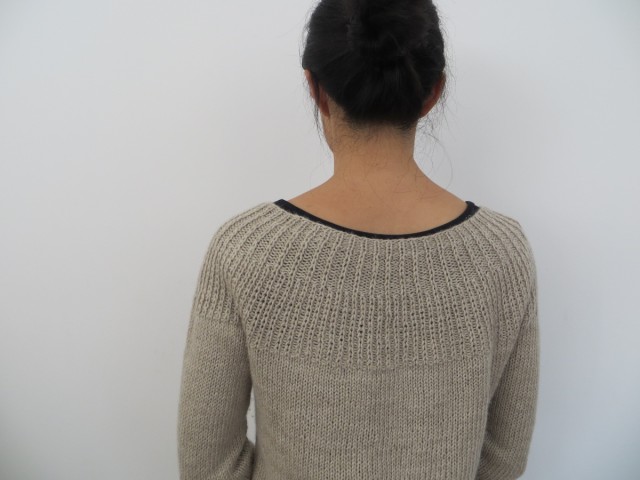
(my first British Seacoast sweater)
So this time, for the first rounds, I used a needle 0.5 mm smaller than the one I used for the yoke – and I can tell you that to knit a worsted weight yarn with 3.5 mm [US4] needle isn’t easy! Then I made the yoke deeper, worked short rows in slipped-rib stitch as for my first one.
The lower body is shorter and sleeves longer than the original, as for my first one too (I recommend that you knit sleeves longer for close-fitting circular-yoke sweaters).
Just done, the sweater looked stiff, with lot of gathers at the start of Stockinette, the neck too tight, not so nice in short. But the blocking (I particularly “opened” the rib)resolved these problems , phew!
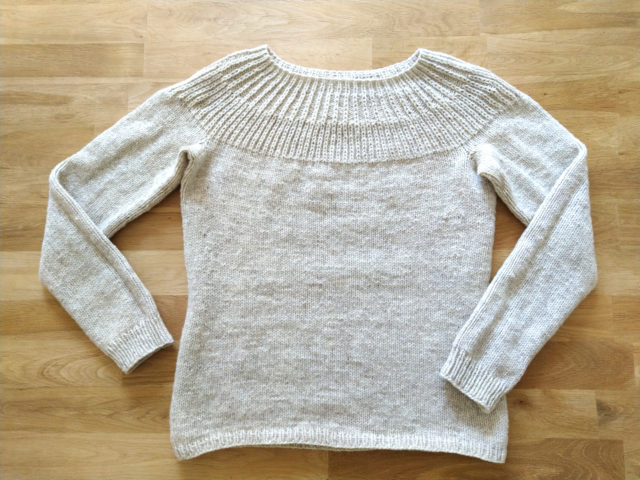
The yoke I highly customized looks like this: the neck is much narrower than on the original and it is a bit than my first one (it’s important for the winter sweater!).
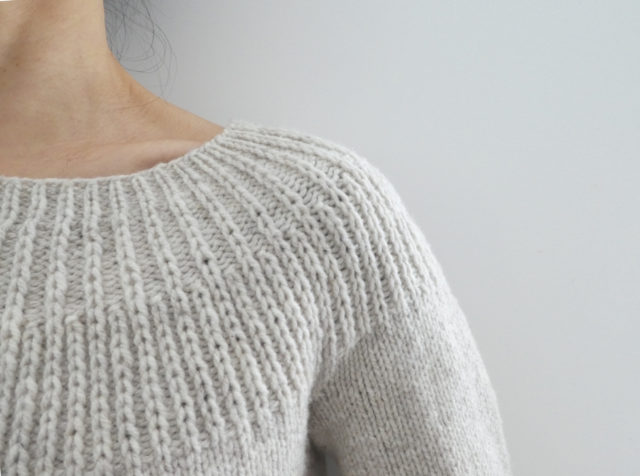
It’s a bit too warm for the end of April but I took some pictures.
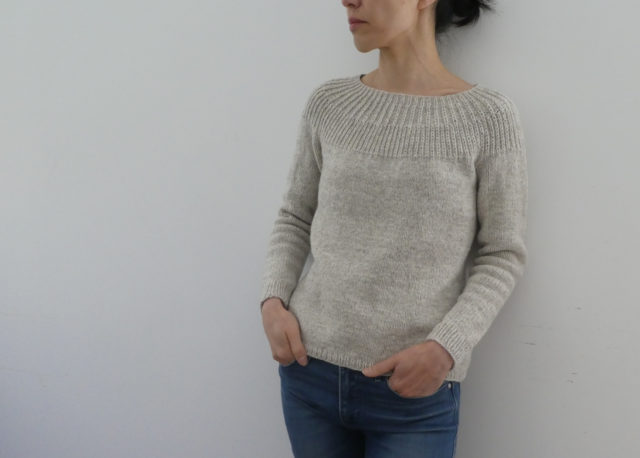

In short, my French Seacoast in Gilliatt looks simpler, more rustic than my first one knit in Lyonese, a wool-linen blend yarn. The fabric has much less drape. I like it as is, but it is not impossible that I’ll make a spring-fall version with Lyonese again!


